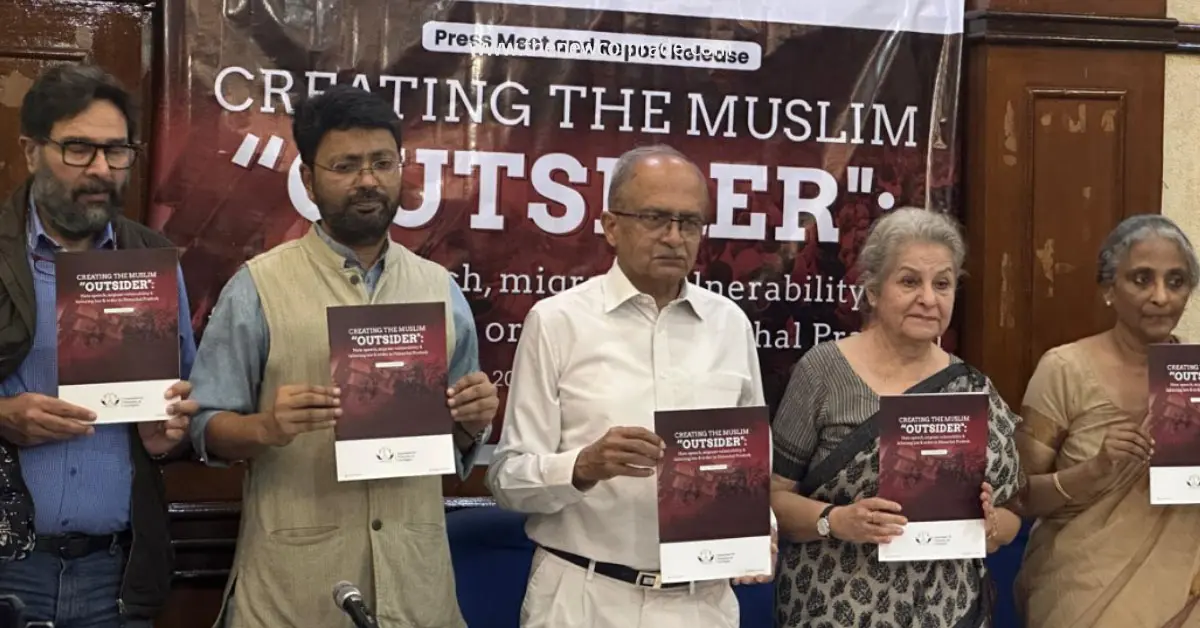The people of the Caucuses region are currently commemorating the life of Imam Shamil Al-Daghestani al-Naqshbandi who died on February 4, 1871. Why still the people remember him? Why he inspires a great mass even now?
Imam Shamil was one of the great Muslim heroes of the 19th century. He united the Muslims of the Caucasus (now Dagestan and Chechnya) by waging a 25 year campaign of armed resistance against oppressive imperialist Russian rule in the mid 19th century.
Yet he wasn’t just a skilled leader and fearless warrior of a guerrilla movement fighting a jihad for the freedom of his people; he was also a learned scholar and deeply pious man.
Ultimately his resistance fight was crushed by the Russians and he himself was imprisoned by the Tsar. But his legacy of bravery, honour and fighting against incredible odds, as well as that of successfully marrying spirituality with jihad, has outlasted his worldly existence.
Early life
Born in 1797 to a religious Muslim family in the village of Gimry in present day Dagestan, Imam Shamil was initially named Ali. But frequent bouts of sickness as a child meant his name was changed to Shamil (complete) in the belief that it would bring him good health.
Although physically weak, the boy was highly intelligent. He spent his teenage years learning Arabic grammar, logic, jurisprudence, rhetoric and philosophy under the guidance of his sheikh, Jamaluddin al-Ghumuqi, from the Naqshbandi Sufi order. He travelled to Damascus as a young man to learn from Sheikh Khalid Al-Baghdadi, the 31st Sheikh of the Naqshbandi order, and became highly educated in the religious sciences.
The story goes that his fellow classmates became jealous of his academic excellence and ambushed the sickly Shamil, beating and wounding him badly with a knife. Distressed and hurt, he crawled into the forest where he used herbs to heal his injuries and emerged determined to train himself to be the fittest and strongest of men.
He went through intense and difficult physical training as a youth to improve his stamina and strength. In later years, people would say there was no one who could swim, run or ride a horse as fast as Imam Shamil.
This physical prowess was to prove invaluable in the jihad against imperialist Russian in the Caucasus.
By the time of his birth Russia had already invaded Dagestan. During the Russian-Turkish war (1787-1791), the people of the Caucasus region fought against the Russians with their fellow Muslim allies, the Ottoman Turks.
Yet Russia emerged as the victor and signed a peace treaty with the Ottoman leaders, and in 1813 it officially annexed Dagestan from the Persian Empire. However, resistance and uprisings against Russian subjugation and oppression in the Caucasus region intensified over the following decades.
Imam Shamil returned home from Damascus to participate in the resistance movement led by his childhood friend Ghazi Muhammad who was the first imam of the Eastern Caucasian tribes.
Jihad was paramount in the tradition of the Naqshbandi Sufi orders in Dagestan. The tradition placed an emphasis on adhering to Shari’ah law as well as the duties of a murid (disciple) to teachers. The jihad, or ghazavat, was essential to Islamic Sufi spirituality and the resistance fighters came to be known as “Murids.”
The distinct Islamic identity of this land and its people was under threat from its absorption into Imperial Russia. So the imamate, a fledgling Islamic state, was formed to protect the Muslims of the Caucasus ensuring religious freedom and autonomy.
The two friends fought alongside each other at the battle of Gimry, their home village, in 1832. They were besieged in the fortress by the Russian army and Ghazi Muhammad was martyred. It was a fierce battle and out of sixty Murids only two survived – Shamil was one of those two. He managed to escape and although badly wounded, he fought his way out killing several Russian soldiers.
According to an account by a Russian soldier, during the fight Imam Shamil was stabbed with a bayonet. After jumping from an elevated stoop “clean over the heads of the very line of soldiers about to fire on him. Landing behind them, whirling his sword in his left hand he cut down three of them, but was bayoneted by the fourth, the steel plunging deep in his chest. He seized the bayonet, pulled it out of his own flesh, cut down the man, and with another superhuman leap, cleared the wall and vanished in the darkness.”

Military strategist and political reformer
Shamil was elected as the third Imam of Dagestan in 1834, and under his leadership he brought together the various Muslim tribes and clans across the Caucasus.
He introduced Shari’ah law as well as extensive administrative reforms to the Imamate. These included the division of the land controlled by the Murids into provinces where a local leader, the emir, oversaw religious and social matters. Regents were also appointed to collect taxes and oversee the Murid cavalry. Qadis (Islamic religious judges) were appointed to take responsibility for security and were accountable to the Regents.
He built madrasas in each village from treasury funds to educate the Caucasus peoples and encouraged talented students to leave the jihad and pursue their education in the Islamic sciences and literature. In this way he was able to ensure the passing of Islamic knowledge to successive generations.
The unification of rival clans and ethnicities under the banner of Islam was an extraordinary feat. Imam Shamil accomplished this by emphasising the principles of Islam and social equality to gain the trust of a disparate people.
He was also known for his absolute fairness in applying Shari’ah law, famously agreeing to give his mother the standard punishment of 100 lashes when she spoke of surrendering to the Russians. But after two lashes he fell across her body and asked to be flogged in her place, insisting that the remaining lashes were not lessened in any way.
The Murids grew in number to over 5,000 becoming a well organised military force, even producing their own ammunitions. This small unit of fierce Muslim freedom fighters battled the forces of Imperial Russia for the next 25 years, inflicting many defeats on their mighty enemy without outside help.
The Russian Tsar Nicholas I wrote to Imam Shamil on several occasions asking him to surrender by enticing him with wealth and status, but Imam Shamil rejected his proposals outright.
He said: “I am Shamil who is the lowest of those Muslims who struggle for the independence and freedom of the Caucasus! I am an honest Muslim who swears not to exchange the protection of Allah for the lordship of the Tsar. ….. Thus, even if I knew that my mortal body would be cut into pieces and that this land that I live in would be destroyed, I would not change this absolute decision.”

Making peace and exile
Following the end of the Crimean War with Turkey, Russia began to focus on the Caucasus.
An army of over 70,000 soldiers was sent to fight the Murids which forced Imam Shamil and his resistance fighters to retreat to the Gunip mountains. Imam Shamil was prepared to fight to the death and asked each of his men if they would do the same. But after heavy losses and with no access to food or ammunition they refused and he signed a peace treaty with the Russians.
The conditions of the treaty included the freedom to practise Islam, as well as a commitment to stop the recruitment of the Caucasus people to the Russian army.
Imam Shamil himself was sent to meet Tsar Alexander II in St Petersburg. On meeting this heroic leader who had battled Russian oppression for over a quarter of a century, the Tsar treated him with great courtesy, such was the respect he commanded even amongst his enemies. From here he was sent into exile in Russia where he was given ample accommodation by the Tsar.
“Thanks to Allah who gave me Russians to have jihad with them while I owned strength so that they could respect me when I became old and my strength has left me,” Imam Shamil said.
After a period of ten years, he was permitted to perform the Hajj pilgrimage and travelled via Turkey. At Istanbul, crowds flocked to see the legendary resistance leader who had battled Imperial Russia in the cause of Islam and justice.
During this visit Imam Shamil was questioned about his greatest sadness and replied: “My biggest regret is about those heroes who died in the mountains, each of whom was worthy of an entire army.”
Following the pilgrimage, he travelled to Medinah, the city of the Prophet (pbuh). Here he prayed and wept at the tomb of the Prophet (pbuh) in reverence. Weak with sadness, he died only a few weeks later and was buried in the Jannatul Baqi cemetery in Medinah.
There is much to learn from the life and character of Imam Shamil – he was one of Islam’s greatest resistance leaders and his lasting legacy is the strong Islamic identity that still exists in the Caucasus today.








